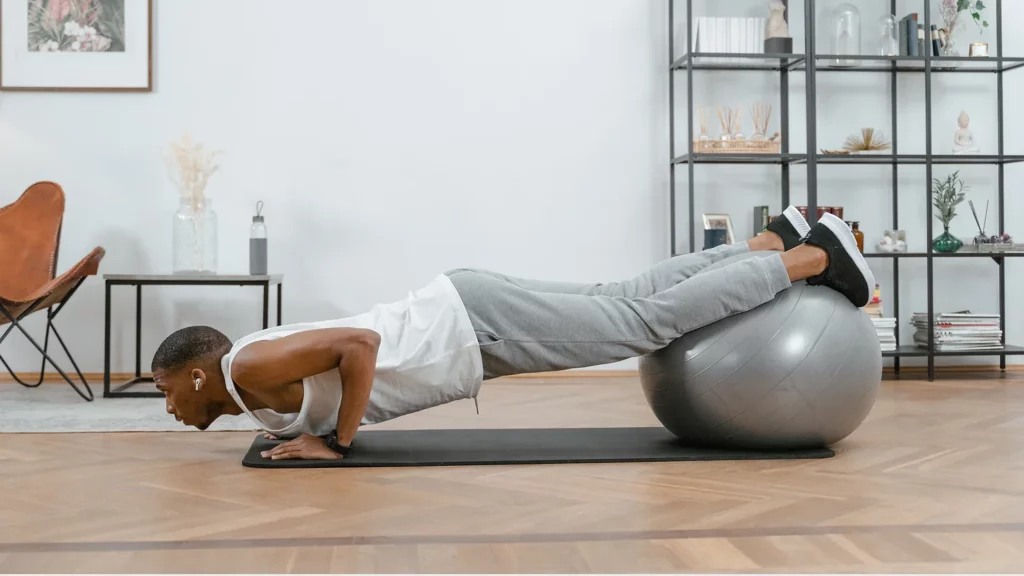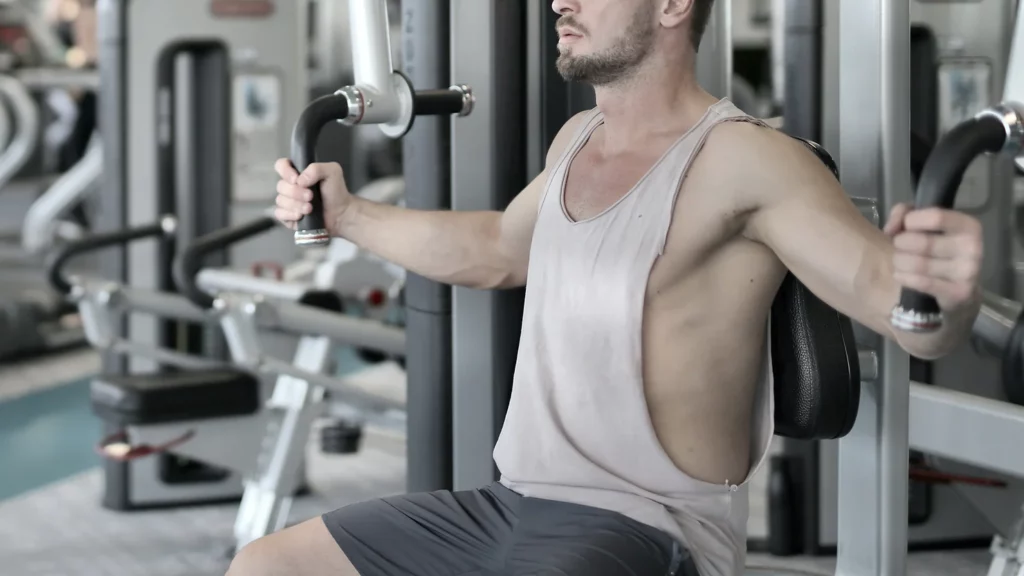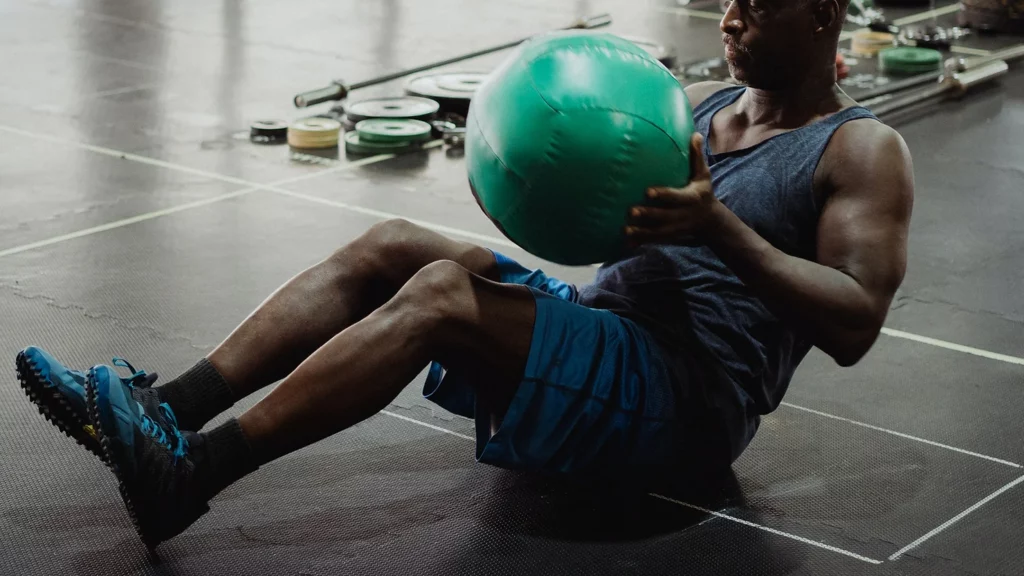Anatomy of the Chest, Shoulders, & Triceps
This section will discuss the anatomy of the chest, shoulders, and triceps.
Chest
The chest is composed of two main muscles: the pectoralis major and the pectoralis minor. The pectoralis major is the larger and more superficial muscle of the two. It originates on the clavicle, sternum, and ribs and inserts on the humerus (upper arm bone). The pectoralis minor is a small, triangular muscle that lies underneath the pectoralis major. It originates in the ribs and inserts into the coracoid process of the scapula (shoulder blade).
The chest muscles work together to move the arm across the body. The pectoralis major is responsible for adduction (bringing the arm across the body) and internal rotation (rotating the arm inward). The pectoralis minor is responsible for depression (lowering the shoulder girdle) and protraction (moving the shoulder girdle forward).
Shoulders
The shoulders are composed of four main muscles: the deltoid, supraspinatus, infraspinatus, and teres minor. The deltoid is a large, triangular muscle that covers the shoulder joint. It originates on the clavicle and scapula and inserts into the humerus. The supraspinatus, infraspinatus, and teres minor are three small muscles that make up the rotator cuff. These muscles originate on the scapula and insert into the humerus.
The shoulder muscles work together to move the arm at the shoulder joint. The deltoid is responsible for abduction (raising the arm away from the body) and external rotation (rotating the arm outward). The supraspinatus, infraspinatus, and teres minor are responsible for the stabilization of the shoulder joint.
Triceps
The tricep is a large, triangular muscle that covers the back of the upper arm. This muscle consists of three heads: the long head, the lateral head, and the medial head. The triceps work together to extend (straighten) the arm at the elbow joint.
These are the main muscles that are activated during the incline bench press. Now let’s take a look at the benefits of performing incline bench press alternate exercises.
Benefits of the Incline Bench Press Alternative Exercises
The main benefit of performing incline bench press alternative exercises is that they can target the chest muscles as effectively as the incline chest press. Incline bench press variations place more emphasis on the upper chest, which can help to develop a well-rounded physique. In addition, these exercises also work the shoulders and triceps to a greater extent. This makes them ideal for building muscle and strength in the upper body.
Another benefit of these exercises is that they are easier on the joints than traditional bench press variations. This is because the angle of the bench places less stress on the shoulders and elbows. As a result, these exercises are ideal for people who experience pain in these areas when performing traditional bench presses.
Incline Bench Press Alternatives
Now that we’ve discussed the benefits of performing incline bench press alternate exercises, let’s take a look at some of the best exercises for building muscle and strength in the upper body.
Exercise #1: Incline Dumbbell Bench Press
The Incline Dumbbell Bench Press is a great exercise for building muscle and strength in the upper body. This exercise targets the chest muscles, shoulders, and triceps. Cues to focus on while doing this exercise are to keep a slight arch in your back and to tuck your chin. In addition, be sure to lower the dumbbells under control and pause for a moment at the bottom of the lift.
To perform this exercise:
-
Lie on an incline bench with your feet flat on the floor and a dumbbell in each hand.
-
Start with the dumbbells at shoulder level and your palms facing forward.
-
Press the dumbbells up until your arms are straight, then lower them back down to the starting position.
-
Repeat for the desired number of repetitions.
Incline Dumbbell Bench Press Common Mistakes
One of the most common mistakes people make when performing the Incline Dumbbell Bench Press is using too much weight. This can lead to poor form and puts unnecessary stress on the shoulders and elbows. In addition, people often flare their elbows out when performing this exercise. This can put stress on the shoulders and increase the risk of injury. Be sure to keep your elbows tucked in and use a weight that you can control.
Exercise #2: Incline Dumbbell Flye
Another excellent muscle-building and strength-training exercise is the Incline Dumbbell Flye. This exercise targets the chest muscles, shoulders, and triceps. Cues to focus on while doing this exercise are to keep a slight bend in your elbows and to squeeze your shoulder blades together. In addition, be sure to lower the dumbbells under control and pause for a moment at the bottom of the lift.
To perform this exercise:
-
Lie on an incline bench with your feet flat on the floor and a dumbbell in each hand.
-
Start with the dumbbells at shoulder level and your palms facing each other.
-
From here, lower the dumbbells out to the sides in a controlled manner.
-
Be sure to keep a slight bend in your elbows and squeeze your shoulder blades together.
-
Pause for a moment at the bottom of the lift, then raise the dumbbells back up to the starting position.
-
Repeat for the desired number of repetitions.
Incline Dumbbell Flye Common Mistakes
One of the most common mistakes people make when performing the Incline Dumbbell Flye is using too much weight. This can result in poor posture and undue strain on the shoulders and elbow joints. In addition, many people keep their arms too straight when performing this exercise. This places unnecessary stress on the elbow joints and limits the range of motion of the exercise. Be sure to keep a slight bend in your elbows and use a weight that you can control.
Exercise #3: Decline Push-Up
The Decline Push-Up is a great exercise for targeting the chest muscles. This exercise can be performed with your body weight or with added resistance. Cues to focus on while doing this exercise are to keep your body in a straight line and to lower your chest down to the floor. In addition, be sure to keep your elbows close to your sides and to exhale as you push yourself up.
To perform this exercise:
-
Place your hands on the floor shoulder-width apart and your feet on an elevated surface.
-
Start in the up position with your body in a straight line from head to heels.
-
From here, lower your chest down to the floor, keeping your elbows close to your sides.
-
Exhale as you push yourself back up to the starting position.
-
Repeat for the desired number of repetitions.
Decline Push-Up Common Mistakes
One of the most common mistakes people make when performing the Decline Push-Up is not keeping their body in a straight line. This can place undue stress on the lower back and hips. In addition, many people allow their elbows to flare out when performing this exercise. This puts unnecessary strain on the shoulder joints and limits the range of motion of the exercise. Be sure to keep your body in a straight line and your elbows close to your sides.
Exercise #4: Low-to-High Cable Flye
The Low-to-High Cable Flye is a great exercise for targeting the chest muscles. This exercise can be performed with a cable machine or with resistance bands. Cues to focus on while doing this exercise are to keep your body in a straight line and to lower the cables down to your sides. In addition, be sure to exhale as you bring the cables back up to the starting position.
To perform this exercise:
-
Attach a resistance band or cable to a low pulley and stand with your feet shoulder-width apart.
-
Start in the up position with your body in a straight line from head to heels.
-
From here, lower the cables down to your sides, keeping your body in a straight line.
-
Exhale as you bring the cables back up to the starting position.
-
Repeat for the desired number of repetitions.
Low-to-High Cable Flye Common Mistakes
One of the most common mistakes people make when performing the Low-to-High Cable Flye is not keeping their body in a straight line. This can place undue stress on the lower back and hips. In addition, many people allow their elbows to flare out when performing this exercise. This puts unnecessary strain on the shoulder joints and limits the range of motion of the exercise. Be sure to keep your body in a straight line and your elbows close to your sides.
Summary
In conclusion, the Incline Dumbbell Flye, Decline Push-Up, and Low-to-High Cable Flye are all great exercises for targeting the chest muscles. Be sure to focus on proper form and technique when performing these exercises. In addition, be sure to use a weight that you can control and to keep your body in a straight line. Lastly, exhale as you perform the exercises.
Are you looking to get fit? Look no further! Our fitness programs are designed to help you build a strong and aesthetic physique. We also provide easy-to-follow routines that will fit any schedule. With our fitness programs, you'll have the tools you need to build muscle and achieve your fitness goals. Click the link below to get started!



